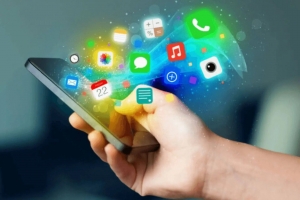Face recognition has become one of the most powerful and widely adopted technologies in the digital age. From unlocking smartphones to enhancing airport security, this innovation transforms how people interact with devices and institutions. The global face recognition market is likely to grow from $5.1 billion 2022 to $12.6 billion by 2028, at a compound annual growth rate (CAGR) of 16.3%, according to MarketsandMarkets.Meanwhile, a survey from the Pew Research Center found that 46% of Americans are comfortable with law enforcement using facial recognition, while others remain concerned about privacy.
This dual perspective shows the balance between convenience and caution. To fully understand this technology, it is essential to explore how face recognition works, where it is applied today, and its impact on security, business, and society.
What is Face Recognition Technology?
Face recognition is a biometric technology that identifies or verifies a person by analyzing unique facial features. Unlike fingerprint or iris scanning, it does not require physical contact, making it seamless and convenient.
Face recognition technology relies on algorithms and artificial intelligence (AI) to detect, map, and compare human faces from photos, videos, or live footage. These systems can instantly match a face against a database of stored images, delivering quick results for identity verification.
How Does Face Recognition Work?
Face recognition may seem magic, but the process is structured and scientific. The technology typically follows four main steps:
1. Face Detection
The system first detects the presence of a human face within an image or video. It involves distinguishing a face from background objects, lighting, and other distractions.
2. Face Analysis
Once detected, the system maps facial landmarks such as the distance between the eyes, the jawline's shape, or the lips' contour. On average, 68 key facial points are measured and analyzed.
3. Conversion to a Digital Signature
Your face's distinctive features are transformed into an exciting mathematical code called a faceprint. This digital representation is securely saved in our system and ready for future comparisons!
4. Matching and Verification
Finally, the system compares the new faceprint with those in its database to confirm an identity or find a match. Advanced algorithms can analyze millions of faces within seconds, with some systems achieving accuracy rates above 99%.
Where is Face Recognition Used Today?
Face recognition has moved far beyond science fiction and is now part of everyday life. Its applications cover multiple industries, ranging from personal convenience to national security.
1. Smartphones and Consumer Electronics
One of the most common uses is unlocking devices. Apple's Face ID, for example, performs more than 30,000 infrared dot projections to build a detailed depth map of a face. It provides stronger security compared to traditional passwords.
2. Airport and Border Security
Airports worldwide use face recognition for faster boarding and immigration checks. The U.S. Customs and Border Protection (CBP) reported scanning over 100 million travelers using biometric facial comparison by 2022.
3. Banking and Financial Services
Banks now integrate face recognition for secure transactions and fraud prevention. Instead of relying solely on PINs or cards, customers can use their faces to authorize payments or access mobile apps.
4. Retail and E-commerce
Retailers use the technology to improve customer experience. For instance, some stores test systems that recognize returning customers and suggest personalized recommendations.
5. Healthcare
Hospitals and clinics adopt face recognition for patient verification, ensuring accurate medical records and preventing identity theft in healthcare systems.
6. Law Enforcement and Public Safety
Police departments employ face recognition to identify suspects and missing persons and even prevent potential threats at public events. Real-time surveillance has become a core part of urban security in cities like London and Beijing.
7. Education
Schools and universities in some countries use face recognition for attendance tracking and campus security. While controversial, it streamlines record-keeping and enhances safety measures.
Advantages of Face Recognition
Face recognition brings numerous benefits that explain its growing popularity:
- Convenience: No need to remember passwords or carry IDs.
- Speed: Instant authentication saves time for users and businesses.
- Accuracy: With advanced AI, recognition accuracy has improved dramatically, reducing false matches.
- Scalability: It can handle massive datasets, making it suitable for governments, banks, and enterprises.
- Non-intrusive: Unlike fingerprint scanning, it works without physical contact.
Challenges and Concerns
While powerful, face recognition also raises ethical and technical questions.
1. Privacy Issues
Many people worry about being constantly monitored without consent. Reports show that 72% of Americans feel uneasy about the widespread use of face recognition in public spaces.
2. Data Security
Once stolen, biometric data cannot be replaced like a password. A breach of faceprint databases could have long-term consequences.
3. Bias and Accuracy Gaps
Early systems showed higher error rates when identifying people of color or women, raising concerns about fairness. Although accuracy has improved, biases remain an ongoing issue.
4. Regulations and Legal Barriers
Countries like the European Union are introducing strict rules under the AI Act to regulate biometric technologies. These rules may limit how businesses and governments use face recognition.
The Future of Face Recognition
The future of face recognition looks both promising and complex. As AI algorithms evolve, systems will become even more accurate and adaptable. Emerging trends include:
- Integration with AI and IoT: Smart homes may soon unlock doors and adjust settings by recognizing residents' faces.
- Touchless Payments: Face recognition, like digital wallets, could enable cashless transactions in seconds.
- Workplace Applications: Offices may adopt face recognition for employee check-ins, replacing traditional time clocks.
- Healthcare Innovation: AI-driven recognition could help monitor patient conditions, such as detecting stress or fatigue.
At the same time, society will continue debating privacy, consent, and ethics. Governments, companies, and advocacy groups will play vital roles in shaping regulations that balance innovation and individual rights.
Conclusion
Face recognition technology has grown from a futuristic concept to an everyday tool shaping how people live, work, and secure their environments. From smartphones to airports, its applications are expanding rapidly, supported by strong market growth and technological innovation. It's crucial to tackle privacy, bias, and ethical usage head-on. These topics deserve our attention and action! To ensure it benefits society responsibly.
As adoption increases, businesses and individuals alike should stay informed about the opportunities and risks. Face recognition is not just about identifying faces—it's about shaping the future of identity, trust, and digital interaction.






